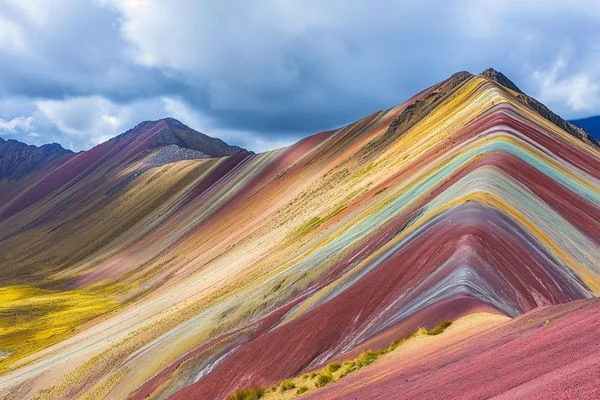
Rainbow Mountain Peru: Trekking Through Andean Landscapes | Travel Blog
Table of contents
- Where Is Rainbow Mountain and How to Get There
- The Sacred Valley: A Cultural and Historical Overview
- Location and Accessibility in the Andes Mountains - Preparing for Your Adventure
- Importance of Sustainability in Tourism
- Acclimatization Tips for High Altitude
- Essential Packing List
- Clothing Considerations
- Trails to Rainbow Mountain
- Flora and Fauna
- Local Communities
- Best Time to Visit - Other Attractions in South America
- Choosing Accommodations
- Ecotourism Initiatives - The Lasting Impact of Your Journey
The charm of Rainbow Mountain, the stunning geological miracle of the Andes in Peru, invites tourists all over the world. There is more than just a story of colors and natural beauty, culture, and adventure. In this guide, we are going to discuss the marvels of Rainbow Mountain, which can give you some insights into the trip to this great location.
Where Is Rainbow Mountain and How to Get There
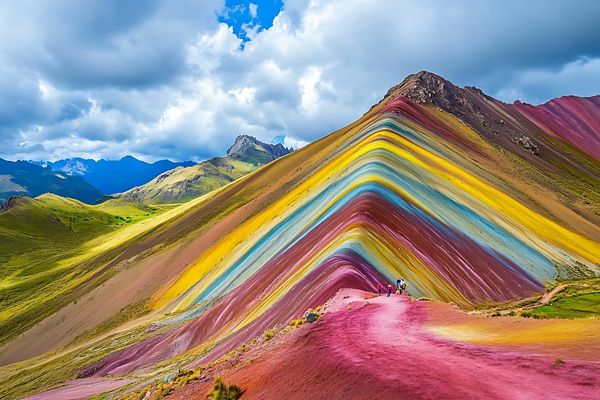
Vinicunca, also Rainbow Mountain, is not merely a sightseeing treat, but a mixture of nature and deep cultural significance. The range of colors, which cover its slopes is bewitching to the visitors, but this is only part of its charm.
Sacred Valley is an enclave nestled in the center of Andes and it hosts Rainbow Mountain also referred to as Vinicunca. The region is full of rich history and cultural customs, which is an essential component of the Inca Empire. Sacred Valley has a wide range of attractions besides Rainbow Mountain such as ancient ruins, traditional villages, and spectacular landscape.
The Sacred Valley: A Cultural and Historical Overview
The Sacred Valley was once the agricultural, cultural and political hub of the Inca Empire. The rich soils made Incas thrive and the majority of towns and villages that can be identified in the valley bear architectural and cultural heritage of this abundance of history. And visiting these locations allows one to understand what the area involves.
The Sacred Valley is saturated with traditions which were passed by the generations and the local people have retained their traditional ways of doing things. Music, crafts and festivals can give us a glimpse of the rich cultural mosaic which defines the area. These traditions not only romanticize the past, it also enriches the present, since it makes it an unforgettable cultural experience to the travelers journey.
Sacred Valley is a place of heaven, a natural one, and also a cultural heritage. It is an area of terraced lands, mountainous and winding rivers in the scenery. This spectacular landscape offers so much to be experienced in the outdoors such as hiking, birdwatching, and photography and therefore nature lovers are able to get plenty to do here.
Location and Accessibility in the Andes Mountains
Rainbow mountain too is elevated over 5,000 meters (16,400 feet) high above the sea level. The vivid colouring of the mountain is due to the strata of sedimentary minerals which happen to be exposed by erosion and each colour represents a different mineral composition. This is a geological phenomenon, which is worth seeing due to this peculiarity.
The geological history of the Rainbow Mountain is complicated, and this is why the colors there are fantastic. Millions of years are taken to form sedimentary rock, which is composed of layers each with different minerals, which contribute to the diversity of colors that the mountain possesses. The reds and yellows, the greens and purples are not merely aesthetically delightful, but also of interest to geologic research.
The current form of Rainbow Mountain was highly dependent on erosion. Glaciers and the natural weathering then eroded away the outer layers revealing the colorful layers beneath. This is an endless process which transforms the picture and offers the visitor new visions each time a visitor visits the site.
Rainbow mountain is a mountain with unique challenges and rewards because of its high Cusco elevation. The low temperatures and the high altitude are united to create a special alpine environment, with special flora and fauna. The altitude offers a physical challenge to the travelers and it also gives the travelers a chance to enjoy the Andes on a high altitude.
Preparing for Your Adventure
In visiting Rainbow Mountain, a lot of time should be taken to ensure that the visit is safe and enjoyable. It is necessary to choose the tour, get ready before the altitude, all these measures to make the most of this wonderful adventure.
An important portion of it is to choose a tour in organizing your visit to Rainbow Mountain. Tour operators that offer guided hikes that include transport in Cusco, food, and experienced guides are many. A better and more enjoyable experience is ensured through the selection of a reputable company. Tours with emphasis on sustainable tourism practices should be sought in order to visit this natural wonder because this assists in conserving the same.
Tour operators offer different packages like day tours, multi-day tours that include other sites within the Sacred Valley. Select a tour according to what interests you as well as what you can. Tours are offered to experienced hikers and there are those tailored to families or individuals who want to have a more relaxed time.
Importance of Sustainability in Tourism
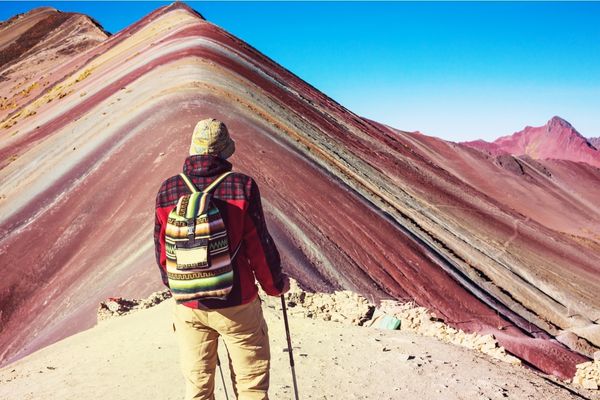
A major consideration in selecting a tour operator is sustainability. Green businesses can be used to reduce the environmental footprint on Rainbow Mountain. Find tours that contribute to the surrounding communities, offer less waste, and encourage conservation to have this natural wonder preserved to a younger generation.
It is really worth having a well-informed guide to accompany you to Rainbow Mountain. With the help of the experienced guides, you will learn about the geology, history and culture of the region, which will enrich your knowledge of the area. They provide you with safety as well, especially on traversing difficult terrain and altitude.
Acclimatization Tips for High Altitude
The Rainbow Mountain is very high and thus this can be a challenge especially to people who are not used to high altitudes. Before your hike, it is important to acclimatize a few days in Cusco or in Sacred Valley. Hydration and a gradual climb and perhaps taking a doctor visit regarding high altitude drugs can all help alleviate the condition.
To cope with the elevated altitude of Rainbow Mountain, it is necessary to acclimatize to the high altitude. Take several days off in Cusco or other Peruvian highlands to give time to adapt to it. Avoid vigorous exercises and ensure that you engage in light exercises at this period to reduce the risks of altitude sickness.
Discuss altitude sickness and potential medication with a health practitioner prior to your hiking trip. Symptoms may be relieved with prescription drugs and over-the-counter remedies. Other measures that can help in achieving a safe and healthy experience include keeping oneself hydrated, eating light foods, and abstaining from alcohol.
Before you take you on the trek it could be worthwhile to get ready physically. As well do regular aerobic activities such as walking, biking or swimming to build up endurance. Working on the strengthening of legs and core will also help you to endure the uneven terrain of Rainbow Mountain.
Essential Packing List
It is necessary to have a good packing list to pack the right equipment to visit Rainbow Mountain so that you can enjoy the trip. The following is a checklist to be considered:
- Wear: Layered clothes are the most important ones since the weather may change a lot. Bring a warm jacket, hat, gloves and rain gear.
- Footwear: Good hiking footwear with good grip is essential.
- Snacks: It is always good to carry a backpack containing water, snacks, sunscreen, first aid kit, and a camera to take pictures of the amazing landscapes.
Layering will also be important in adapting to the weather changes at rocky Rainbow Mountain. Begin with moisture-wicking base-layers, add insulating mid-layers, and complete with a waterproof outer shell. A large hat and sunglasses to block UV waves are also advisable to avoid the bright sun at high altitude.
Clothing Considerations
Besides the clothes, carry necessary equipment to your expedition. Your water, snacks, and other basic needs will be carried in a lightweight and durable backpack. Nuts and dried fruit can be used as a high energy snack to give you a short-term energy boost when climbing. Do not leave out a high-SPF sunscreen in order to cover your skin against the sun rays.
Rainbow mountain will provide you with hundreds of moments where you might capture great photos. A camera with a great zoom lens should also be carried to capture the beautiful sceneries and the colorful sceneries. The tripod is a portable item and may come in handy when getting your shot in place particularly in low light particularly at dawn or at night.
Trails to Rainbow Mountain
Andes mountains will provide you with spectacular scenery during your Rainbow Mountain adventure. The trip to this natural phenomenon is just as unforgettable as the place itself and you will have the chance to dive into the landscapes and cultures of the region.
Rainbow Mountain is a challenging expedition in its own way, and it provides sweeping mountains of the Andes with a glimpse of the local wildlife. Hikers also usually have llamas and alpacas that make the trip even more beautiful. The road is tough but offers stunning scenery to be remembered every step of the way.
Numerous paths will highlight Rainbow Mountain, and they differ in the views each trail provides, along with the difficulties. Others are more direct and others wander out through distant valleys and lofty mountain passes. By researching the various trails, it is possible to select the trail that fits your abilities and your interests well.
Flora and Fauna
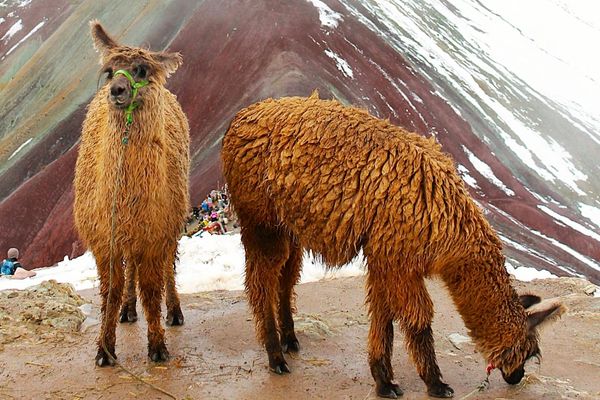
Andes Mountains consist of a variety of flora and fauna. Alpine meadows, rugged shrubs, and wild flowers of all colors will be encountered as you hike. Watch out to the wildlife of the area such as condors flying over the region and the rare Andean foxes.
Weathers in the Andes are unpredictable, especially higher up. Ready yourself against unexpected temperature changes, wind and rain. It will be a good idea to check the weather forecast prior to your trek and to be prepared with the right clothing and equipment to ensure that you are comfortable and safe.
Local Communities
The experience is enhanced by interacting with the local communities on the way. A significant number of the residents are the descendants of the Incas, and their heritage and arts provide us with an insight into their culturally long-lasting culture. Buying local artisan products helps these groups of people and contributes to cultural exchange.
The Andes alone boasts of colorful indigenous communities that possess their own unique culture and traditions. Interactions with these communities are an opportunity to know their lifestyle, both traditional farming methods and weaving methods that have been passed down over the generations.
Authentic handicrafts are best bought in local markets and villages. These products are a significant souvenir and help local artisans whether it is something as intricately woven as textile or a handcrafted ornament. Find items that are of alpaca wool, which is the traditional material of many Andean works.
Best Time to Visit
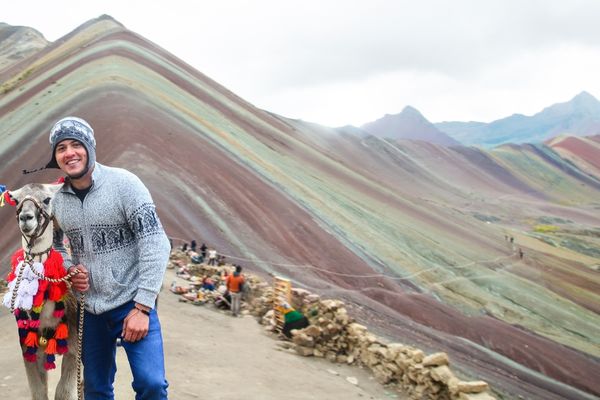
One more way is to plan your visit around local festivals so that you can make it even more exciting. Andes festivals usually come with great colorful parades, folk music, and dancing. By getting involved in these festivals, the cultural heritage of the region is further associated with.
Rainbow Mountain is not the only attraction, yet South America has plenty of other sites that could add to your trip. The continent has a plethora of experiences to be experienced in the form of antique ruins to nature marvels.
Though Rainbow mountain is a highlight, the area features a lot of other attractions. You might want to spend more time and travel to Machu Picchu, the lost city of the Incas or Lake Titicaca, the highest navigable lake in the world. These attractions have a variety of cultural and natural experiences to supplement your visit to.
Other Attractions in South America
Machu Picchu, the one of the New Seven Wonders of the World, is the place that should be included in the list of the places that everyone, who visits Peru, must visit. The old Inca fortress entails spectacular structures and beautiful scenery. Think about an amazing adventure Inca Trail which will be remembered forever.
The highest navigable lake in the world is Lake Titicaca which is shared by Peru and Bolivia. It is full of islands whose waters are blue like the sky and which have a rich history and culture. Explore the Uros Islands, completely composed of reeds or the Taquile Island, where textile art is their business.
The Amazon Rainforest is just a short trip by air with Cusco, and this is totally different to the Andes. Visit the green jungle where unbelievable wildlife and vegetable species can be found. Guided tours are also a way of exploring to the heart of the rain forest where one can spot wildlife and have cultural experiences.
Sustainable travelling is crucial as you visit South America. Admire local traditions, reduce waste and promote environmentally friendly companies. Such activities contribute to the conservation of the natural and cultural heritage of the Andes to the future generations.
Choosing Accommodations
Accommodation selection in a sustainable manner is a major step towards responsible traveling. Find lodges and hotels which consume renewable energy, reduce wastes, and give back to the local conservation activities. By staying in places that are friendly to the environment, you experience more of your travel and you have fewer negative effects on the environment.
On a trip to wildlife, do not disturb wildlife in their natural habitats. Do not disrupt animals or their habitat, and abide by instructions of tour operators and parks. By promoting tours that are conservation oriented, it will mean that wild animals will be kept in the wilderness.
Ecotourism Initiatives
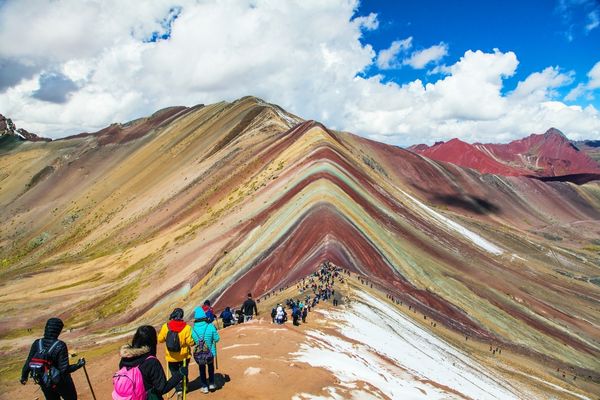
Engaging in community-based tourism contributes to economic vitality in the community and community development. Plus, it allows for cultural exchange. These programs often include community hosted homestays, certificates and skills workshops, and tours guided by community members. They provide an authentic travel experience, and allow the traveler to support the community in the most tangible way possible.
Rainbow mountain is not all about what is unique in terms of its beauty only. The mountain is a gorgeous representation of the cultural and geographic variety of the planet and is a part of the great Andes. Your visit can be a great one and not irresponsible with some planning and taking care of your surroundings. Go in with a clear mind and heart and you have the Rainbow Mountain that will help inspire and broaden you with appreciation.
The Lasting Impact of Your Journey
After going on a trip you have to pause down and think of the experiences and knowledge that you have acquired. Consider how the scenery, culture and people have influenced your thinking. Share your experience and photos on social networks and demonstrate to the world that this is a wonderful place to visit and inspire others to want to do it.
Turn your Rainbow Mountain experience into an inspiration in your future travelling projects. One should take what they have learnt on this visit and use it in order to make your next visit to South America or any other part of the globe more meaningful and sustainable.
You may wish to make donations to the agencies that preserve the natural and cultural heritage of Andes. With the help of donations and advocacy, it can respond by being able to observe the fact that the future generation has a chance to see the marvels of the Rainbow Mountain and the surrounding land as well. Your action will save these lovely sceneries permanently.
Check Our Suggested Tours:


